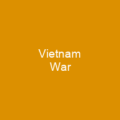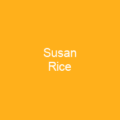“`html
Vietnam. Just the name conjures images of lush rice paddies, bustling cities, and a history as rich and complex as its vibrant culture. But have you ever stopped to really consider what makes Vietnam tick? This Southeast Asian nation, officially the Socialist Republic of Vietnam, isn’t just another dot on the map; it’s a dynamic tapestry woven from ancient traditions and modern aspirations, a place where the echoes of the past resonate with the promise of the future. With a population exceeding 100 million people, Vietnam is a nation on the move, a land of contrasts and captivating stories waiting to be explored. But where did this fascinating journey begin?
A Journey Through Time: Unearthing Vietnam’s Rich History
Imagine a land where human footprints stretch back to the Paleolithic age. In Vietnam, they do! Archaeological discoveries reveal a history far deeper than many realize, a story etched in stone and whispered by the wind across millennia. Homo erectus fossils and Homo sapiens remains paint a picture of early human life thriving in this region. Was it the fertile land? The strategic location? Whatever the draw, Vietnam has been a cradle of civilization for an incredibly long time.
From Ancient Kingdoms to Chinese Influence
What sprung from these early settlements? The development of wet-rice cultivation, a cornerstone of Southeast Asian life, paved the way for the Đông Sơn culture and the emergence of kingdoms like Văn Lang and Âu Lạc around 1,000 BC. Think of these kingdoms as the seeds from which modern Vietnam would sprout. Legend even whispers of a powerful Hồng Bàng dynasty dating back to 2879 BC! Did these early kingdoms flourish in isolation? Not quite. Like many nations in the region, Vietnam experienced periods of Chinese rule. Imagine centuries of cultural exchange and political tug-of-war. But did this subdue the Vietnamese spirit? Far from it!
Independence and Dynasties: Forging a Nation
The Vietnamese people possess an unyielding spirit of independence. After periods of Chinese dominion, they rose again and again. The Đại Việt kingdom, established in 938 AD after Ngô Quyền’s victory, marked a pivotal moment. Was this the end of their struggles? Hardly. Dynasties like the Lý, Trần, Lê, and Nguyễn rose and fell, each era leaving its mark on the nation’s identity. These weren’t just changes in power; they were centuries of growth, conflict, and ultimately, unification. Picture these dynasties as layers of sediment, each contributing to the rich soil of Vietnamese history.
Echoes of Colonialism and the Vietnam War
Then came the Europeans. Portuguese, Dutch, and French traders and missionaries arrived from the 16th century onwards, drawn by the allure of trade and the zeal of evangelism. Did their arrival simply mean new trading partners? Unfortunately, history rarely unfolds so simply. French influence grew, morphing from trade into colonization. Cochinchina, Annam, and Tonkin fell under French control. But did the Vietnamese people accept this quietly? Resistance movements, like flickers of defiance in the colonial darkness, emerged. Figures like Hồ Chí Minh rose, becoming beacons of nationalist movements, demanding independence.
War and Reunification: A Nation Forged Anew
The 20th century brought even more turmoil. Japanese occupation during World War II, followed by a devastating famine, tested Vietnam’s resilience to its limits. From the ashes of war, the Việt Minh, led by Hồ Chí Minh, emerged, a powerful force seeking independence from both France and Japan. The First Indochina War erupted, a brutal struggle for self-determination. Were the Geneva Accords of 1954 the end of the conflict? Sadly, no. The division of Vietnam into North and South set the stage for the devastating Vietnam War (1955-1975). Imagine a nation torn in two, a battleground of ideologies and superpowers. Countless lives were lost, but finally, in 1975, Saigon fell, and in 1976, North and South Vietnam reunified, becoming the Socialist Republic of Vietnam. Was reunification the end of hardship? Not immediately. The post-war years brought new challenges, including collectivization and re-education camps.
Vietnam Today: Economy, Society, and Culture
From a war-torn nation, Vietnam has emerged as a dynamic developing country. The Đổi Mới reforms of 1986 marked a turning point, shifting the economy from a planned system to a ‘socialist-oriented market economy.’ Did this economic shift work? Absolutely! Private ownership and foreign investment surged, fueling remarkable economic growth. Vietnam is now a significant exporter, a rising star in Southeast Asia. But what about the land itself? What shapes this vibrant nation?
Land and Life: Geography, Climate, and Biodiversity
Vietnam’s geography is as diverse as its history. Imagine a country stretching along the eastern Indochinese Peninsula, boasting a long coastline and bordering several nations. Hills and forests dominate, punctuated by the fertile Red River Delta and Mekong River Delta – the rice bowls of the nation. From the soaring heights of Fansipan, Vietnam’s highest mountain, to the depths of Hang Sơn Đoòng Cave, one of the world’s largest caves, the landscape is breathtaking. And what about the climate? It’s a land of monsoons, with distinct regional variations. Is Vietnam just beautiful scenery? It’s much more! It’s a biodiversity hotspot, ranking 16th globally! Think of Vietnam as a treasure chest of species, a vital part of the global ecosystem.
Politics and International Relations: Navigating the Global Stage
Vietnam is a unitary Marxist-Leninist one-party socialist republic, governed by the Communist Party of Vietnam (CPV). How does this political structure play out on the world stage? Vietnam maintains relations with 178 countries, actively participating in international organizations like the UN and ASEAN. From historical alignments with the Eastern bloc, Vietnam now prioritizes independence, self-reliance, and cooperation. Is Vietnam isolated? Far from it. It’s increasingly engaged in global affairs, forging partnerships and playing a key role in regional stability.
A Flourishing Economy and Thriving Culture
From its agricultural roots, Vietnam’s economy has diversified dramatically. While agriculture, particularly wet rice cultivation, remains important, sectors like manufacturing and tourism are booming. Remember the Đổi Mới reforms? They unleashed economic potential, transforming Vietnam into a major exporter of goods like cashew nuts, black pepper, rice, and coffee. And what about culture? Vietnamese culture is a rich blend of influences, rooted in the Đông Sơn culture and shaped by Confucianism, Buddhism, and Taoism. Think of it as a delicious cultural stew, seasoned with centuries of history and tradition. From the elegant áo dài to the melodic sounds of traditional music, Vietnamese culture is vibrant and captivating. And let’s not forget the food! Vietnamese cuisine, with its emphasis on fresh ingredients and balanced flavors, is celebrated worldwide. Is Vietnam simply a place to visit? It’s an experience to savor, a culture to immerse yourself in, a journey through time and tradition.

Vietnam’s story is one of resilience, adaptation, and remarkable progress. From ancient kingdoms to colonial struggles, from devastating wars to economic reforms, Vietnam has navigated a complex path to become the dynamic nation it is today. It stands as a testament to the strength of the human spirit, a vibrant blend of history and modernity, culture and innovation. Vietnam isn’t just a country; it’s a journey, an ongoing story unfolding before our eyes, full of promise and potential for the future.
“`
Frequently Asked Questions About Vietnam
How ancient is Vietnam’s history really?
Vietnam’s history stretches back much further than you might imagine! Archaeological evidence reveals human presence dating all the way back to the Paleolithic age. Imagine, Homo erectus and Homo sapiens walked this land millennia ago. Was Vietnam a cradle of civilization? It certainly seems so!
What were the pivotal moments in Vietnam’s pre-modern history?
Before modern times, Vietnam witnessed the rise and fall of numerous kingdoms and dynasties. The development of wet-rice cultivation led to the Đông Sơn culture and kingdoms like Văn Lang and Âu Lạc. Later, the Đại Việt kingdom in 938 AD marked a crucial step towards independence after periods of Chinese rule. Dynasties like Lý, Trần, Lê, and Nguyễn further shaped the nation. Each period, a layer in the rich tapestry of Vietnamese history.
How did past struggles mold today’s Vietnam?
Vietnam’s path to the present was forged through periods of colonialism and devastating wars. French colonization in the 19th century, followed by Japanese occupation and the subsequent Vietnam War, profoundly impacted the nation. Yet, from these ashes of conflict, and led by figures like Hồ Chí Minh, arose a strong desire for independence and reunification, ultimately shaping the Socialist Republic of Vietnam we know today. Resilience, isn’t it a defining trait?
What sparked Vietnam’s economic transformation?
Vietnam’s economic transformation is a remarkable story of recovery and reform. The Đổi Mới reforms of 1986 were the catalyst, shifting the nation towards a “socialist-oriented market economy.” This pivotal change opened doors to private ownership and foreign investment, leading to significant economic growth. From rice paddies to factories, Vietnam’s economy diversified, becoming a rising force in Southeast Asia. Who would have predicted such a boom?
What geographical and natural wonders does Vietnam hold?
Beyond its fascinating history, Vietnam boasts incredible geographical diversity. Its long coastline, fertile deltas like the Red River Delta and Mekong River Delta, and mountainous regions like Fansipan showcase a stunning landscape. Home to Hang Sơn Đoòng Cave, one of the world’s largest caves, and a biodiversity hotspot, Vietnam’s natural beauty is truly captivating. Isn’t it a land of wonders waiting to be explored?
You want to know more about Vietnam?
This page is based on the article Vietnam published in Wikipedia (retrieved on March 16, 2025) and was automatically summarized using artificial intelligence.







